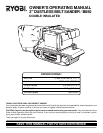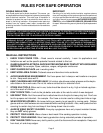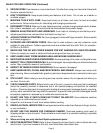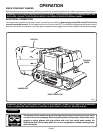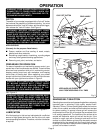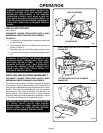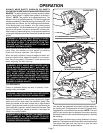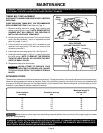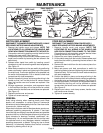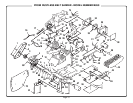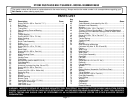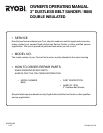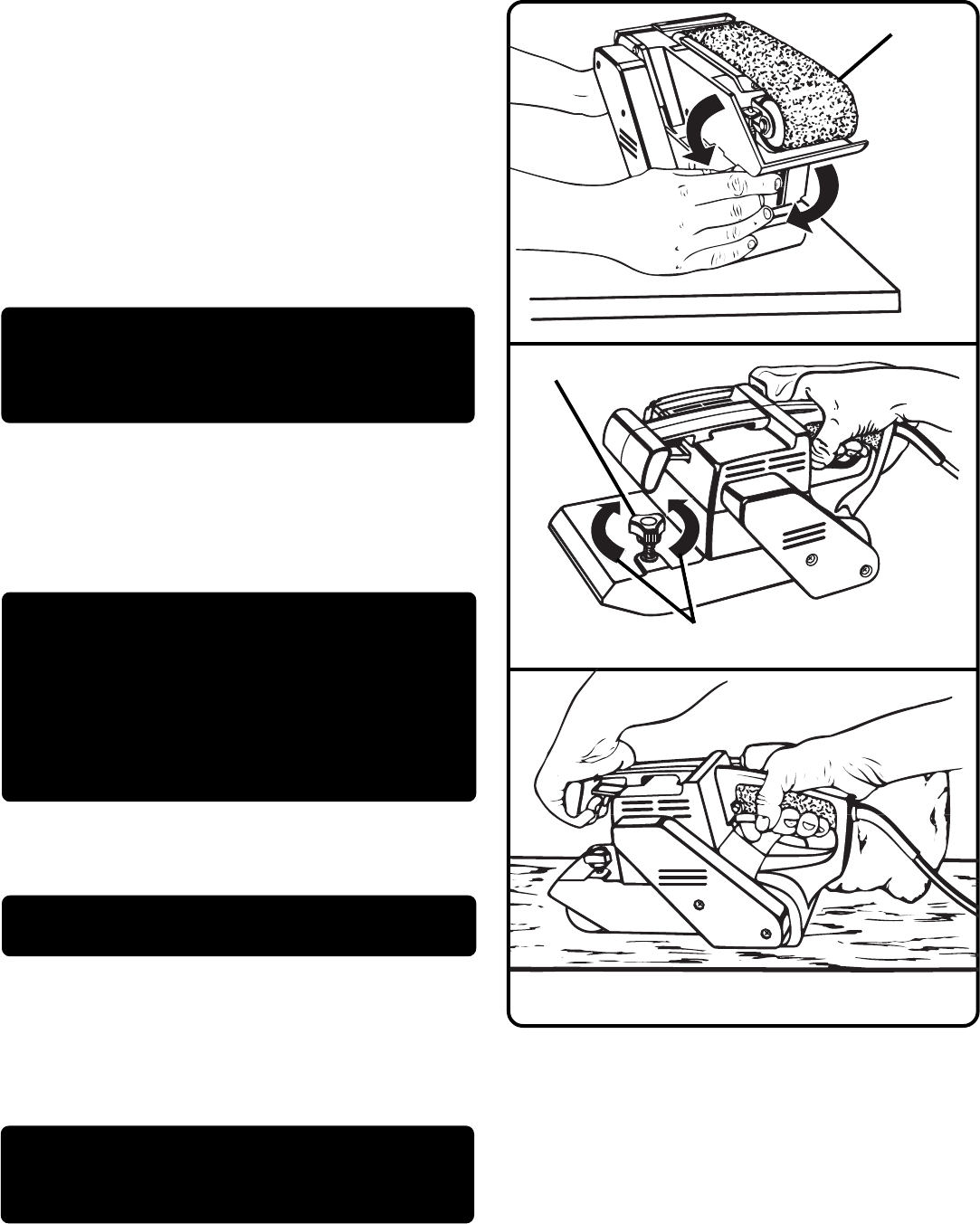
Page 7
OPERATION
ALWAYS WEAR SAFETY GOGGLES OR SAFETY
GLASSES WITH SIDE SHIELDS WHEN OPERATING YOUR
SANDER. To adjust sanding belt, connect sander to power
supply. Place sander in upside down position as shown in
Figure 7. NOTE: This position is for adjustments only. The
sander is not in an operating position. Pull switch trigger and
release immediately. Observe tracking of sanding belt. If the
sanding belt runs inward, turn the tracking screw clockwise.
If the sanding belt runs outward, turn the tracking screw
counterclockwise. This should be done until you are sure belt
will not run off sander, or come in contact with internal parts.
After installing a new sanding belt, it may become necessary
to change the adjustment several times until the belt becomes
pliable.
WARNING: IF SANDING BELT BEGINS TO WEAR
EXCESSIVELY ON THE INNER EDGE, READJUST
TRACKING SCREW. IT IS ADJUSTED TOO FAR
INWARD AND THE SANDING BELT IS RUBBING
AGAINST INTERNAL PARTS.
When you are sure the belt will not rub against internal
parts, start your sander and fine adjust the tracking
screw until the belt stablizes.
See Figure 8.
When correctly adjusted, the outer edge of the belt will
be even with the outer edge of the base of your sander.
Belt life will be greatly increased if a few seconds are
spent adjusting the belt tracking.
WARNING: KEEP HANDS AND FINGERS AWAY
FROM MOVING SANDING BELT. ANY PART OF
YOUR BODY COMING IN CONTACT WITH MOVING
BELT COULD RESULT IN SERIOUS INJURY. DO
NOT WEAR LOOSE CLOTHING OR JEWELRY
WHEN OPERATING YOUR SANDER. THEY COULD
GET CAUGHT IN MOVING PARTS AND FOREIGN
OBJECTS COULD GET THROWN AWAY FROM
SANDER CAUSING INJURY.
TO OPERATE
Clamp or otherwise secure the work to prevent it from
moving under your sander.
WARNING: UNSECURED WORK COULD BE THROWN
BACK TOWARD OPERATOR CAUSING INJURY.
Before placing sander on work surface, squeeze the trigger
switch and let the motor reach its maximum speed, then
lower your sander to the work surface with a slight forward
motion. Using the rear handle to control your sander and the
front handle only to guide it, move it slowly over the work.
See
Figure 9.
Allowing your sander to remain in one place will
result in an uneven surface.
WARNING: KEEP A FIRM GRIP ON SANDER WITH
BOTH HANDS AT ALL TIMES. FAILURE TO DO SO
COULD RESULT IN LOSS OF CONTROL LEADING TO
POSSIBLE SERIOUS INJURY.
Your sander was designed to provide the proper weight on
the sanding belt. Extra pressure will result in uneven work,
clogged belts, and possible motor burnout. NOTE: The front
roller of your sander was not designed for contour sanding.
Sanding on the front roller could cause irregularity in sanding
belt tracking.
Use a coarser belt when heavy cutting is desired, not heavy
pressure. The importance of this cannot be over-emphasized.
The weight has been built into the tool to give the most
efficient pressure at the proper location.
Fig. 9
Fig. 7
Fig. 8
SANDING BELT
TRACKING SCREW
TURN TRACKING SCREW
TO ADJUST SANDING BELT



